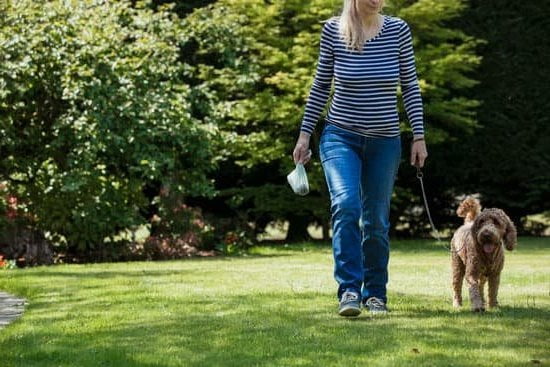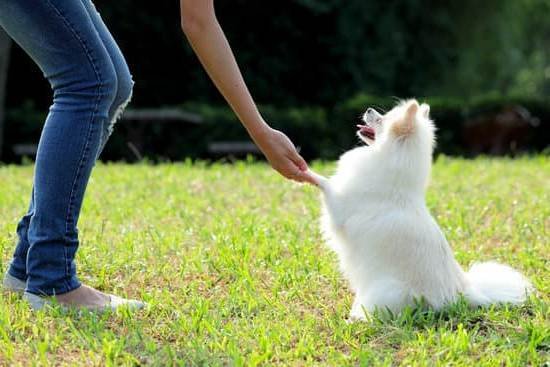Are you wondering how to train your dog to go outside and pee? Outdoor potty training is essential for the overall well-being of your furry friend, and it can also bring numerous benefits for you as a pet owner. In this article, we will explore the significance of outdoor potty training, the steps involved in the process, and helpful tips for achieving success.
First and foremost, training your dog to pee outside is crucial for maintaining a clean and odor-free home environment. Unlike indoor potty training, where accidents can lead to unpleasant odors and stains, teaching your dog to go outside can significantly reduce the mess and upkeep inside your home.
Choosing the right spot for your dog to pee outside is another important aspect of outdoor potty training. Factors such as accessibility, safety, and comfort must be taken into consideration when selecting a suitable location. Additionally, establishing a consistent routine that works for both you and your dog is vital in reinforcing proper outdoor potty habits.
Effective outdoor potty training also involves using positive reinforcement methods to encourage your dog’s good behavior. Rewarding your pet with praise or treats each time they relieve themselves outside can motivate them to continue doing so. By understanding your dog’s body language and recognizing signs that indicate their need to go outside, you can further enhance the success of outdoor potty training.
Choosing the Right Spot for Your Dog to Pee Outside
When choosing the right spot for your dog to pee outside, it’s important to consider several factors that can contribute to successful outdoor potty training. One of the main benefits of having a designated pee spot for your dog is that it helps reduce potential mess and odors in your yard or neighborhood. Additionally, creating a specific area for your dog to urinate can also help prevent damage to your lawn or landscaping.
In selecting the ideal location for your dog to pee outside, you should take into account factors such as accessibility, privacy, and drainage. Look for an area that is easily accessible for both you and your dog, ensuring that it’s convenient for regular potty breaks.
Privacy is also important as some dogs prefer a quiet and secluded spot to relieve themselves. Moreover, consider the drainage of the area to prevent urine from collecting in one spot and causing unpleasant odors.
To find the perfect pee spot for your dog in your yard or neighborhood, consider experimenting with different locations until you find one that meets all the necessary criteria. You may want to observe your dog’s behavior when they are given access to certain areas, which can help you determine which spots they prefer. Keep in mind that every dog is different, so it may take some time and patience to find the best location for outdoor peeing success.
| Factors to Consider | Tips |
|---|---|
| Accessibility | Choose an area easily accessible for both you and your dog |
| Privacy | Find a quiet and secluded spot where your dog feels comfortable |
| Drainage | Select an area with proper drainage to avoid urine accumulation |
Establishing a Routine for Outdoor Potty Breaks
When it comes to outdoor potty training for your dog, consistency is key. Establishing a routine that works for both you and your pet is crucial in reinforcing the behavior of going outside to pee. Dogs thrive on routine, and having a set schedule for outdoor potty breaks can significantly aid in the training process. Ideally, dogs should be taken out first thing in the morning, after meals, before bedtime, and at regular intervals throughout the day.
Creating a schedule that aligns with your own daily routine is important to ensure that you can consistently reinforce outdoor potty breaks for your dog. Additionally, take into consideration your dog’s age and breed when setting a routine. Young puppies and senior dogs may need more frequent opportunities to relieve themselves, so adjusting the schedule accordingly is vital.
Remember that accidents are bound to happen while establishing this routine. Remaining patient and continuing to reinforce positive behavior through consistent potty breaks will help your dog internalize the new routine over time. Using positive reinforcement during these times will encourage your furry friend to make going outside their natural preference.
Finally, once you establish a consistent outdoor potty break schedule with effective reinforcement methods, it is likely that your dog will become more proactive in signaling when they need to go outside. Consistency and patience are key components of successful outdoor potty training routines for dogs.
| Factors to Consider When Selecting a Pee Spot | Tips for Finding the Ideal Location in Your Yard or Neighborhood |
|---|---|
| Dog’s Breed & Age | Check if there’s any urination frequency due to territorial marking |
| Pet Allergies | Safety concerns like avoiding areas near toxic plants or chemicals |
| Proximity To Home Entrance | Ideally choose an area that’s easily accessible but also away from high-traffic areas. |
Using Positive Reinforcement to Encourage Outdoor Peeing
Positive reinforcement is a powerful tool when it comes to training your dog to go outside and pee. This method involves rewarding your dog for exhibiting the desired behavior, in this case, peeing outside. By using positive reinforcement, you can effectively encourage your dog to repeat this behavior and make outdoor potty training a more successful and enjoyable experience for both of you.
One effective way to use positive reinforcement in outdoor potty training is through the use of treats and praise. When your dog successfully pees outside, immediately give them a small treat or offer verbal praise. This will help them associate peeing in the designated spot with something positive and rewarding. Over time, they will be more inclined to go outside to pee in order to receive a treat or praise from you.
It’s important to be consistent with the use of positive reinforcement. Every time your dog pees outside, acknowledge their good behavior with treats and/or praise. Consistency will help reinforce the desired behavior and make it more likely that your dog will continue peeing outside. Remember that dogs respond well to positive feedback, so be generous with your rewards and encouragement during the outdoor potty training process.
Understanding Your Dog’s Body Language
One of the key aspects of training your dog to pee outside is being able to recognize their body language and signs that they need to go. This can be crucial in preventing accidents indoors and establishing a successful potty routine. Here are some important cues to look out for:
- Restlessness or pacing: When your dog starts to act restless or pace around, it could be a sign that they need to relieve themselves. Pay attention to any sudden changes in behavior.
- Sniffing and circling: Dogs often exhibit specific behaviors such as sniffing the ground or circling an area when they need to pee. Keep an eye out for these actions as they can indicate that your dog is ready for a potty break.
- Whining or barking: Some dogs may vocalize their need to go outside by whining, barking, or scratching at the door. Understanding these vocal cues can help you respond promptly to your dog’s needs.
By being attentive to your dog’s body language, you can effectively communicate with them and create a successful outdoor potty training routine.
Learning how to recognize these signals and responding accordingly is essential in setting up your dog for success in their outdoor potty training journey. It allows you to proactively address their needs and reduce the likelihood of accidents inside your home.
Dealing With Accidents
When training your dog to go outside and pee, accidents are bound to happen from time to time. It’s important not to get discouraged and to handle these setbacks with patience and understanding. Here are some tips for dealing with accidents during the outdoor potty training process:
- Clean up promptly: When accidents occur indoors, it’s crucial to clean up the mess thoroughly. Use an enzymatic cleaner specifically designed for pet accidents to eliminate odors and discourage your dog from soiling the same spot again.
- Avoid punishment: While it can be frustrating when your dog has an accident indoors, avoid punishing or scolding your pet. This can create fear and confusion, making the training process more difficult.
- Stay consistent: Consistency is key in outdoor potty training. Stick to your routine and continue using positive reinforcement to encourage your dog to go outside. Over time, accidents should become less frequent as your dog gets used to the new routine.
Remember that accidents are a normal part of the training process, and with patience and consistent effort, you and your dog will eventually achieve success in outdoor potty training.
Gradually Transitioning From Indoor to Outdoor Potty Training
When transitioning your dog from indoor to outdoor potty training, it’s important to understand that this process will take time and patience. It’s a significant shift for your pet, so it’s essential to approach the transition in a gradual and compassionate manner.
Tips for Smoothly Shifting From Indoor to Outdoor Training
One effective way to make the transition smoother is by gradually moving your dog’s indoor pee pads or designated potty area closer and closer to the door that leads outside. This gradual movement will help your dog associate the act of relieving themselves with the outdoors.
Another tip is to start by taking your dog outside at regular intervals, especially after meals and naps. Encouraging them with positive reinforcement when they go outside will reinforce the behavior you want to see.
How to Help Your Dog Become Comfortable With the Change
As you transition from indoor to outdoor potty training, it’s crucial to remain patient and consistent. Be understanding of any setbacks or accidents that occur during this adjustment period. If accidents happen inside, resist scolding or punishing your dog, as this can cause stress and hinder their progress. Instead, gently redirect them outside if you catch them in the act of going indoors.
During this time, be observant of your dog’s body language and signs that indicate they need to relieve themselves. By being attuned to their needs and providing ample opportunities for outdoor bathroom breaks, you’ll help ease their transition from indoor potty training methods.
Common Pitfalls and How to Overcome Them
Addressing Common Challenges in Outdoor Potty Training
Outdoor potty training for dogs is not without its difficulties, and many pet owners may encounter common pitfalls along the way. One of the most common challenges is the resistance or reluctance from dogs to pee outside, especially if they have been accustomed to indoor potty training. Additionally, some dogs may struggle with learning to hold their bladder until they are taken outside, leading to accidents indoors.
Another challenge that dog owners may face is the inconsistency in their dog’s behavior. This can be frustrating when one day your dog goes outside perfectly fine, but the next day they have multiple indoor accidents. Understanding these common challenges is essential for overcoming them and successfully training your dog to go outside and pee.
Solutions for Handling Resistance or Reluctance From Your Dog
To overcome resistance or reluctance from your dog to pee outside, it’s important to remain patient and persistent. Take the time to gradually introduce your dog to the outdoor environment and provide positive reinforcement when they exhibit good behavior. Additionally, make sure that you are choosing an appropriate spot for your dog to pee outside, as this can significantly affect their willingness to go outdoors.
For dogs struggling with holding their bladder until they are taken outside, it’s crucial to establish a consistent potty schedule and ensure that you are taking them out frequently enough. Gradually increase the length of time between potty breaks as your dog becomes more accustomed to holding their bladder.
Overcoming these common pitfalls in outdoor potty training requires dedication, patience, and understanding. By addressing these challenges head-on and using positive reinforcement techniques, you can help your dog successfully transition from indoor to outdoor potty training. Celebrate each success along the way and be proud of the progress that you and your furry friend have made together.
Additional Resources for Outdoor Potty Training Success
When it comes to outdoor potty training for your dog, having access to additional resources can be incredibly beneficial in ensuring success. Whether you’re a first-time dog owner or simply looking for new training techniques, there are a variety of books, online resources, and professional trainers available to assist you in this process.
One valuable resource for outdoor potty training success is books specifically focused on canine behavior and training. Many authors have written comprehensive guides on how to train your dog to go outside and pee, offering step-by-step instructions and valuable tips for overcoming common challenges. By learning from experienced professionals in the field, you can gain insight into effective training methods and understand the psychology behind outdoor potty training.
In addition to books, there are numerous online resources dedicated to dog training and behavior modification. From informative articles and video tutorials to forums where you can connect with other dog owners facing similar challenges, the internet offers a wealth of information at your fingertips. Taking advantage of these resources can provide you with a broader perspective on outdoor potty training, as well as practical advice from fellow dog owners who have successfully trained their pets to go outside.
Finally, seeking assistance from professional trainers or attending obedience classes can be extremely beneficial for both you and your dog. Trainers have the expertise to tailor their approach to your specific needs and address any unique challenges you may encounter during the outdoor potty training process. Their guidance can provide clarity on effective techniques and create a supportive environment for both you and your pet as you work towards achieving success in outdoor potty training.
Conclusion
Outdoor potty training for your dog takes time, patience, and consistency, but the rewards are well worth the effort. By understanding the importance of outdoor potty training, choosing the right spot for your dog to pee outside, establishing a routine, using positive reinforcement, and being aware of your dog’s body language and needs, you can successfully train your dog to go outside.
Dealing with accidents and common pitfalls may happen along the way, but with perseverance and the right tools and resources, you can overcome these challenges.
It is important to remember that every dog is different and may progress at their own pace. Celebrate every success along the way and be patient through setbacks. Transitioning from indoor to outdoor potty training may take some time as well. Understanding your dog’s comfort level and making gradual changes will help ease this transition.
By following these outdoor potty training tips and consistently working with your dog, you can enjoy a cleaner home environment while giving your furry friend a great sense of independence and freedom. Remember that outdoor potty training not only benefits your household but also promotes good health and hygiene for both you and your beloved pet. So keep celebrating each successful step in this process.
Frequently Asked Questions
How Do I Train My Dog to Pee and Poop Outside?
Training a dog to pee and poop outside requires consistency, patience, and positive reinforcement. Start by taking your dog outside frequently, especially after meals and naps, and wait for them to relieve themselves. When they do, praise and reward them with treats immediately.
Establish a designated potty area and use consistent verbal cues to encourage them to go. Clean up accidents inside with an enzymatic cleaner to remove any scent markers that may attract them back to the same spot.
How Long Does It Take to Train a Dog to Pee Outside?
The time it takes to train a dog to pee outside varies depending on the individual dog’s age, temperament, and breed. Puppies may take a few weeks to several months before consistently going outside.
Adult dogs may also require a few weeks of consistent training before mastering it. Patience is key during this process, as every dog learns at their own pace.
How Do You Teach Dog to Tell You to Go Outside?
Teaching a dog to indicate when they need to go outside can be achieved through several methods. One effective approach is bell training; hang a bell by the door at your dog’s nose level and ring it each time you take your dog out for potty breaks.
Eventually, your dog will learn that ringing the bell signals their desire to go outside. Alternatively, pay attention to your dog’s body language or teach them specific cues such as scratching at the door or sitting quietly by the exit as a way of communicating their need to go out.

Welcome to the blog! I am a professional dog trainer and have been working with dogs for many years. In this blog, I will be discussing various topics related to dog training, including tips, tricks, and advice. I hope you find this information helpful and informative. Thanks for reading!





